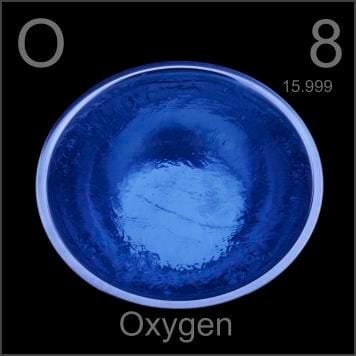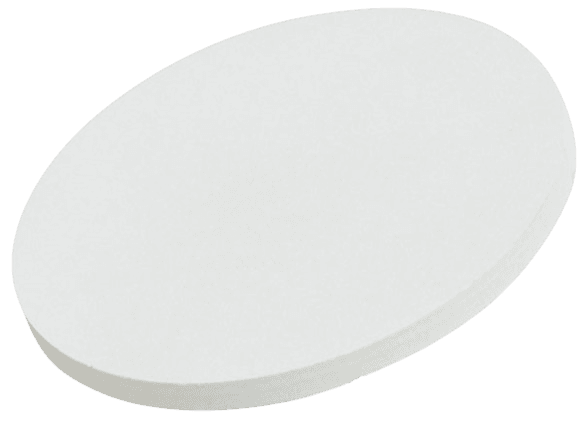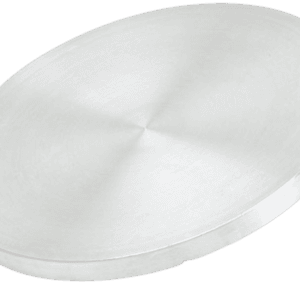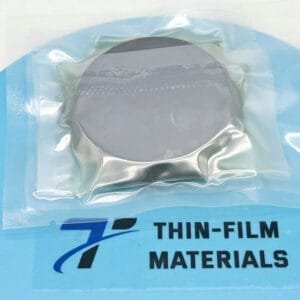- You cannot add that amount to the cart — we have 1 in stock and you already have 1 in your cart. View cart
ST0192 Terbium Oxide Sputtering Target, Tb4O7
Chemical Formula: Tb4O7
Catalog Number: ST0192
CAS Number: 12036-41-8
Purity: 99.9%, 99.95%, 99.99%
Shape: Discs, Plates, Column Targets, Step Targets, Custom-made
Terbium Oxide sputtering target come in various forms, purities, sizes, and prices. Thin Film Materials (TFM) manufactures and supplies top-quality sputtering targets at competitive prices.
Terbium Oxide Sputtering Target Description
Terbium oxide sputtering target from TFM is an oxide sputtering material containing terbium (Tb) and oxygen (O).
 Terbium, symbolized as “Tb,” is a chemical element named after Ytterby, Sweden. It was first documented in 1842 by G. Mosander, who also successfully isolated it. Terbium has an atomic number of 65 and is found in the f-block of the periodic table, specifically in Period 6, Group 3. Its relative atomic mass is 158.92535(2) Dalton, with the number in brackets representing the uncertainty in the measurement.
Terbium, symbolized as “Tb,” is a chemical element named after Ytterby, Sweden. It was first documented in 1842 by G. Mosander, who also successfully isolated it. Terbium has an atomic number of 65 and is found in the f-block of the periodic table, specifically in Period 6, Group 3. Its relative atomic mass is 158.92535(2) Dalton, with the number in brackets representing the uncertainty in the measurement.
Related Product: Terbium Sputtering Target
 Oxygen is an element with the chemical symbol “O,” derived from the Greek words ‘oxy’ (acid) and ‘genes’ (forming). It was discovered in 1771 by the chemist Carl Wilhelm Scheele, who also managed to isolate it. Oxygen has an atomic number of 8 and is located in Group 16 and Period 2 of the periodic table, which places it in the p-block. The element is well-known for its role in forming acids when combined with hydrogen. The standard atomic weight of oxygen is approximately 15.9994(3) Dalton, where the value in parentheses indicates the uncertainty. This element is crucial for many biological and chemical processes, making it an essential component of life on Earth.
Oxygen is an element with the chemical symbol “O,” derived from the Greek words ‘oxy’ (acid) and ‘genes’ (forming). It was discovered in 1771 by the chemist Carl Wilhelm Scheele, who also managed to isolate it. Oxygen has an atomic number of 8 and is located in Group 16 and Period 2 of the periodic table, which places it in the p-block. The element is well-known for its role in forming acids when combined with hydrogen. The standard atomic weight of oxygen is approximately 15.9994(3) Dalton, where the value in parentheses indicates the uncertainty. This element is crucial for many biological and chemical processes, making it an essential component of life on Earth.
Terbium Oxide Sputtering Target Specification
| Material Type | Terbium Oxide |
| Symbol | Tb4O7 |
| Color/Appearance | Brown |
| Melting Point (°C) | Decomposes to Tb2O3 |
| Density | 7900 kg/m-3 |
| Molecular Weight | 747.69 |
| Exact Mass | 174.92 g/mol |
Terbium Oxide Sputtering Target Packaging
Our Tb4O7 Terbium Oxide Sputtering Target is meticulously tagged and labeled on the exterior for easy identification and stringent quality control. We take great care in handling and packaging to prevent any potential damage during storage or transportation, ensuring that the product reaches you in perfect condition.
Get Contact
Related Products
Related products
FAQ
What is a sputtering target?
It’s the source material (in solid form) used in sputter deposition to eject atoms or molecules that then form a thin film on a substrate.
What materials are used to make sputtering targets?
Targets can be pure metals (e.g., gold, copper, aluminum), ceramics (e.g., Al₂O₃, SiO₂, TiO₂), alloys, or composites—chosen based on the film’s desired properties.
How are sputtering targets manufactured?
They are produced by processes such as melting/casting for metals or sintering (often with hot isostatic pressing) for ceramics and composite targets to ensure high density and purity.
How does sputter deposition work with these targets?
In a vacuum chamber, a plasma (typically argon) bombards the target, ejecting atoms that travel and condense on a substrate, forming a thin film.
What factors affect the life and performance of a sputtering target?
Key factors include the target’s purity, density, grain structure, and the sputtering yield (i.e. how many atoms are ejected per incident ion), as well as operating conditions like power density and gas pressure.
How do I know when a sputtering target needs to be replaced?
Operators monitor target erosion (often by measuring the depth of the eroded “race track”) or track total energy delivered (kilowatt-hours) until it reaches a threshold that can compromise film quality.
Why do some sputtering targets need to be bonded to backing plates?
Fragile materials (such as many ceramics or certain oxides) and precious metals often require a backing plate to improve cooling, mechanical stability, and to allow thinner targets that reduce material costs.
What is the difference between DC and RF sputtering for targets?
DC sputtering is used for conductive targets, while RF sputtering is necessary for insulating targets (like many oxides) because it prevents charge buildup on the target’s surface.
How does reactive sputtering differ from standard sputtering?
In reactive sputtering, a reactive gas (e.g., oxygen or nitrogen) is introduced to form compound films on the substrate, but it may also “poison” the target surface if not carefully controlled.
Can I use customer-supplied powders to make sputtering targets?
Many manufacturers prefer to control raw material quality by sourcing their own powders; using external powders can risk impurities and inconsistent target properties.
What storage and handling procedures are recommended for sputtering targets?
Targets should be stored in clean, dry conditions (often in original packaging or re-wrapped in protective materials) and handled with gloves to avoid contamination, ensuring optimal performance during deposition.
What key parameters affect sputtering deposition rates?
Deposition rate depends on factors such as target material and composition, power density, working gas pressure, substrate distance, and the configuration of the sputtering system (e.g., magnetron design).





Reviews
There are no reviews yet.